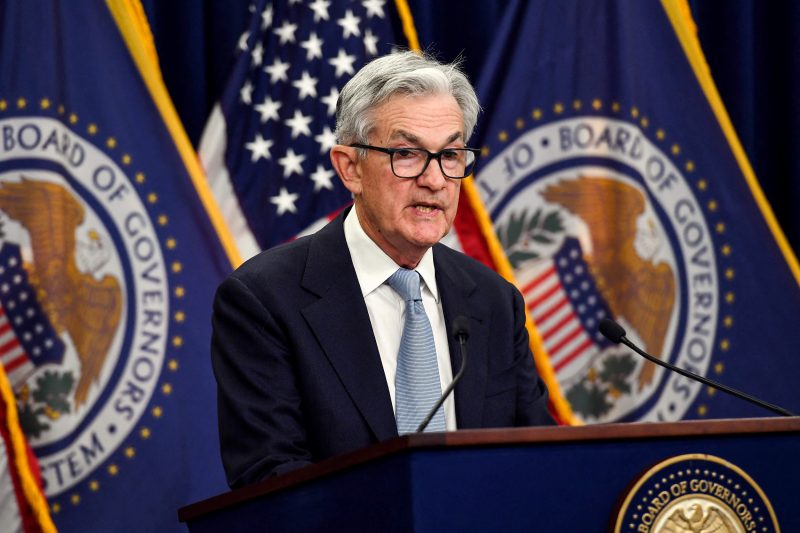WASHINGTON — Fallout from the U.S. banking crisis is likely to tilt the economy into recession later this year, according to Federal Reserve documents released Wednesday.
Minutes from the March meeting of the Federal Open Market Committee included a presentation from staff members on potential repercussions from the failure of Silicon Valley Bank and other tumult in the financial sector that began in early March.
Though Vice Chair for Supervision Michael Barr said the banking sector “is sound and resilient,” staff economists said the economy will take a hit.
“Given their assessment of the potential economic effects of the recent banking-sector developments, the staff’s projection at the time of the March meeting included a mild recession starting later this year, with a recovery over the subsequent two years,” the meeting summary stated.
Projections following the meeting indicated that Fed officials expect GDP growth of just 0.4% for all of 2023. With the Atlanta Fed tracking a Q1 gain around 2.2%, that would indicate a pullback later in the year.
That crisis had caused some speculation that the Fed might hold the line on rates, but officials stressed that more needed to be done to tame inflation.
Federal Open Market Committee officials ultimately voted to increase the benchmark borrowing rate by 0.25 percentage points, the ninth increase over the past year. That brought the fed funds rate to a target range of 4.75%-5%, its highest level since late-2007.
The rate hike came less than two weeks after Silicon Valley Bank, at the time the 17th largest institution in the U.S., collapsed following a run on deposits. The failure of SVB and two others spurred the Fed to create emergency lending facilities to make sure banks could continue operations.
Since the meeting, inflation data has been mostly cooperative with the Fed’s goals. Officials said at the meeting that they see prices falling further.
“Reflecting the effects of less projected tightness in product and labor markets, core inflation was forecast to slow sharply next year,” the minutes stated.
But concern over broader economic conditions remained high, particularly in light of the banking problems. Following the collapse of SVB and two other institutions, Fed officials opened a new borrowing facility for banks and eased conditions for emergency loans at the discount window.
The minutes noted that the programs helped get the industry through its troubles, but officials said they expect lending to tighten and credit conditions to deteriorate.
“Even with the actions, participants recognized that there was significant uncertainty as to how those conditions would evolve,” the minutes said.
Half-point hike if not for crisis?
Several policymakers questioned whether to hold rates steady as they watched to see how the crisis unfolded. However, they relented and agreed to vote for another rate hike “because of elevated inflation, the strength of the recent economic data, and their commitment to bring inflation down to the Committee’s 2 percent longer-run goal.”
In fact, the minutes noted that some members were leaning toward a half-point rate hike prior to the banking problems. Officials said inflation is “much too high” though they stressed that incoming data and the impact of the hikes will have to be considered when formulating policy ahead.
“Several participants emphasized the need to retain flexibility and optionality in determining the appropriate stance of monetary policy given the highly uncertain economic outlook,” the minutes said.
Inflation data has been generally cooperative with the Fed’s aims.
The personal consumption expenditures price index, which is the inflation gauge policymakers watch the most, increased just 0.3% in February and was up 4.6% on an annual basis. The monthly gain was less than expected.
Earlier Wednesday, the consumer price index showed an increase of just 0.1% in March and decelerated to a 5% annual pace, the latter figure down a full percentage point from February.
However, that headline CPI reading was held back mostly by tame food and energy prices, and a boost in shelter costs drove core inflation higher by 0.4% for the month and 5.6% from a year ago, slightly above where it was in February. The Fed expects housing inflation to slow through the year.
There was some bad news on the inflation front: A monthly survey from the New York Fed showed that inflation expectations over the next year increased half a percentage point to 4.75% in March.
Markets as of Wednesday afternoon were assigning about a 72% chance of one more quarter percentage point rate hike in May before a policy pivot where the Fed cuts before the end of the year, according to CME Group data.
Though the FOMC approved an increase in March, it did alter language in the post-meeting statement. Where previous statements referred to the need for “ongoing increases,” the committee changed the phrasing to indicate that more hikes “may be appropriate.”
More from CNBC
IMF warns hard landing ‘within the realm of possibilities’ for U.S. economy Warren Buffett says we’re not through with bank failures Juul to pay $462 million to settle youth vaping claims from six states, D.C.



























